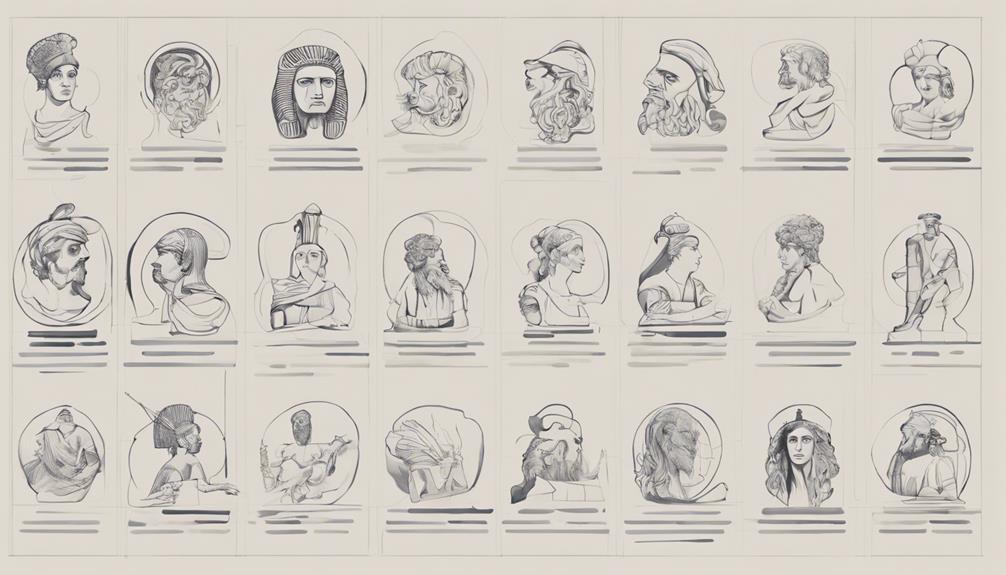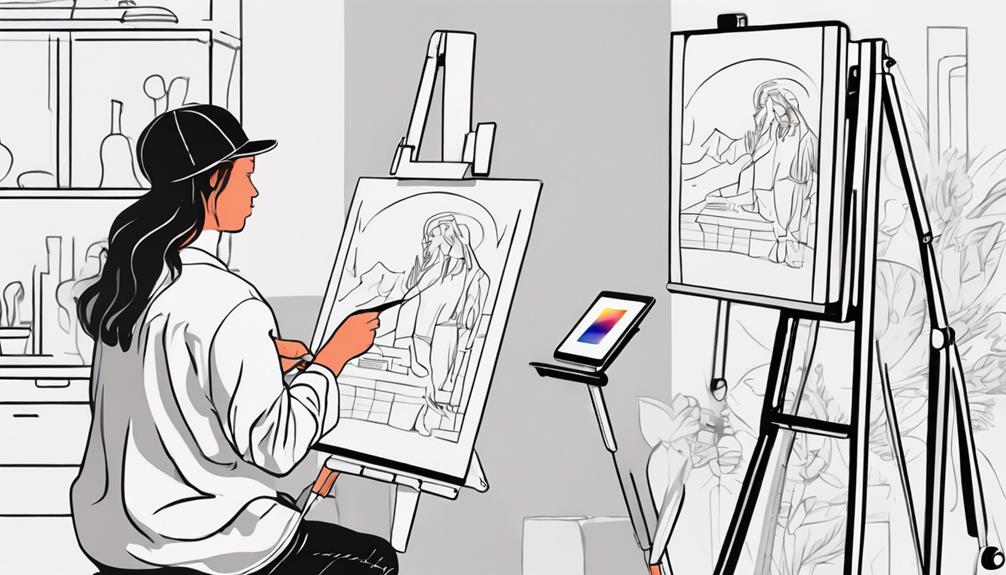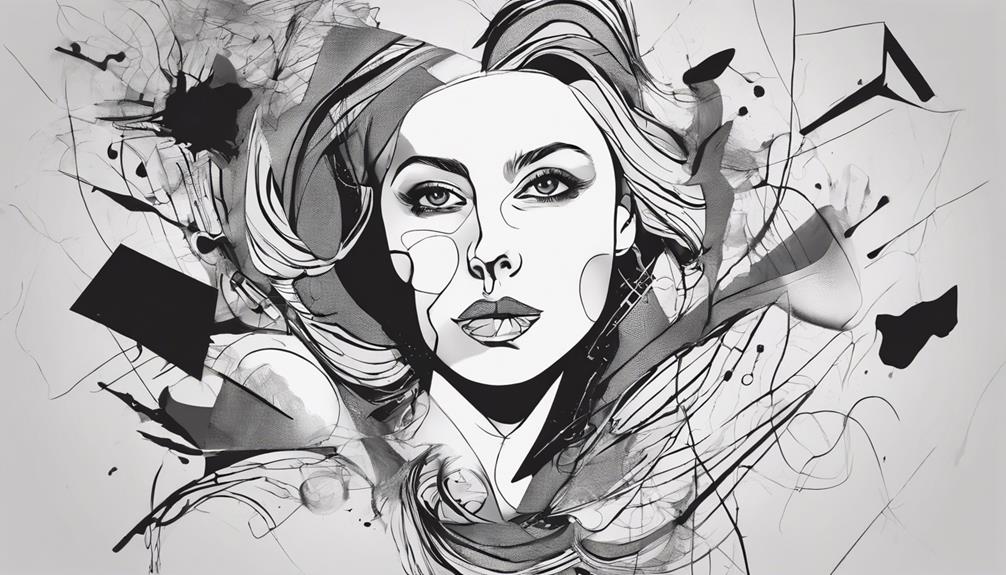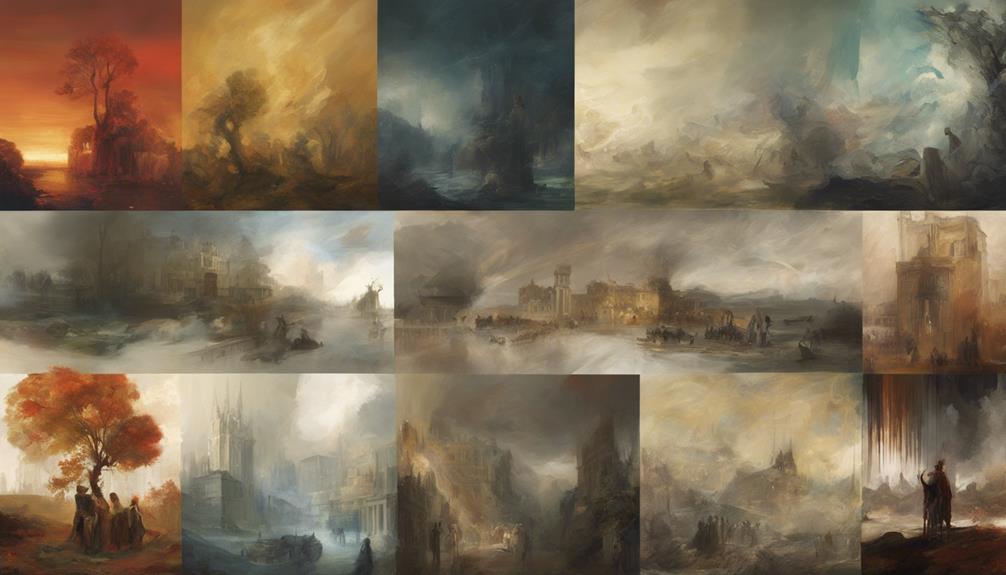The evolution of artistic styles throughout history is a complex interplay of numerous factors that shape the trajectory of creative expression. From the influence of societal norms to the psychological motivations driving artists, the dynamics behind the transformation of art styles are multifaceted and intriguing. By examining the historical context of artistic evolution, the impact of cultural shifts on art styles, technological advancements, and the role of individual artists in shaping movements, a deeper understanding of why artistic styles change over time begins to emerge. The intricate web of influences that contribute to this phenomenon invites a closer examination of the ever-changing landscape of artistic expression.
Key Takeaways
- Artistic evolution is driven by experimentation, cultural shifts, and societal influences.
- Technology advancements revolutionize art creation methods and diversify artistic approaches.
- Personal experiences and emotional responses to societal events shape artists' unique expressions.
- Collaborative efforts and diverse perspectives redefine art, challenging boundaries and addressing contemporary issues.
Historical Context of Artistic Evolution

In understanding the evolution of art styles, it is imperative to delve into the historical context that has shaped and propelled artistic transformations over time. Art history reveals a dynamic interplay between various factors such as artists' experimentation, cultural shifts, societal beliefs, and technological advancements. Artists throughout history have continuously pushed boundaries, exploring new techniques, mediums, and forms of expression. The evolution of styles of art is closely intertwined with the changing landscapes of society and the values held by different civilizations. As cultural shifts occur, new artistic movements emerge in response to these transformations, reflecting the zeitgeist of the era.
Moreover, technological advancements have also played a pivotal role in revolutionizing art styles. Innovations in tools and materials have opened up new possibilities for artists, allowing them to experiment and create in ways previously unimaginable. The fusion of traditional practices with modern technology has led to the birth of innovative art forms, reshaping the artistic landscape and challenging conventional norms in the process. Thus, the historical context of art history serves as a rich tapestry woven with the threads of artists' ingenuity, cultural influences, societal norms, and technological progress.
Influence of Cultural Shifts on Art Styles
The dynamic evolution of art styles is intricately influenced by the ever-shifting cultural landscape, where societal beliefs, values, and norms interplay to shape and redefine artistic expressions.
- Artists, as cultural observers, adapt their styles to resonate with contemporary audiences and effectively communicate the spirit of their time.
- Cultural shifts prompt artists to address current events, societal changes, and pressing issues through innovative stylistic approaches.
- The influence of global cultures on art styles leads to a fusion of diverse artistic elements, reflecting the interconnectedness of the modern world.
- Artistic evolution mirrors the changing perspectives on religion, politics, and social issues, demonstrating the impact of cultural movements like feminism and civil rights on thematic and stylistic choices.
Through these intricate interactions between art, cultural shifts, artists, contemporary audiences, and global cultures, art styles continue to transform, ensuring that they remain relevant and reflective of the complexities of the societies in which they exist.
Technological Advancements Impacting Artistic Trends

Advancing technologies have significantly reshaped the trajectory of artistic trends, propelling a wave of innovation and experimentation across various creative domains. The introduction of technology, such as photography, has played a pivotal role in shifting art styles towards abstract and experimental forms. Moreover, the integration of digital tools and software has revolutionized art creation methods, opening up new artistic possibilities and expressions for artists to explore.
Artists embracing technology have leveraged new mediums, techniques, and tools to push the boundaries of traditional art, leading to the evolution of various styles over time. The accessibility to art materials and resources facilitated by technological advancements has encouraged artists to innovate and diversify their artistic approaches. By incorporating technology into their art production processes, artists have been able to break free from conventional constraints, resulting in dynamic changes and advancements in art styles. Overall, technology continues to be a driving force behind the ever-changing landscape of artistic trends and expressions.
Psychological and Emotional Factors in Artistic Development
The evolution of art styles is intricately linked to the psychological and emotional factors shaping an artist's development over time, highlighting the profound impact of internal experiences on creative expression.
- Personal experiences and memories deeply influence an artist's perception and interpretation of the world, leading to unique artistic expressions.
- Emotional responses to societal events, relationships, and cultural shifts can serve as catalysts for transformative changes in artistic styles.
- Artists' psychological growth and self-discovery play a crucial role in the evolution of their artistic expression, reflecting their evolving understanding of themselves and the world around them.
- Creative evolution often stems from artists' exploration of new techniques, materials, and concepts driven by their psychological curiosity and desire for innovation.
These psychological and emotional factors intertwine to shape the artistic journey of individuals, guiding them towards new forms of expression and contributing to the dynamic landscape of art throughout history.
Societal Pressures and Artistic Innovation

Artists' responses to prevailing societal pressures play a pivotal role in driving artistic innovation and evolution. Societal pressures such as political movements, cultural shifts, and contemporary issues significantly influence artistic innovation by prompting artists to adapt their styles to reflect the changing landscape. This adaptation is often a response to evolving norms, values, and challenges within society. Economic factors, technological advancements, and global events also contribute to the need for artists to explore new styles and techniques that align with the current societal context. The intersection of these pressures with personal experiences fuels the desire to communicate ideas effectively through visual expression, leading to the emergence of evolving art styles. The table below illustrates the relationship between societal pressures and artistic innovation:
| Societal Pressures | Impact on Artistic Innovation |
|---|---|
| Political Movements | Prompt artists to adapt styles to reflect current events |
| Cultural Shifts | Influence artists to explore new techniques in response to changing norms |
| Contemporary Issues | Drive artists to engage with relevant themes through their work |
Individual Artists Shaping Artistic Movements
Individual artists have historically played a significant role in shaping artistic movements by introducing novel techniques and challenging established norms. Their innovative approaches have sparked revolutions in art styles, influencing the course of artistic evolution. From surrealism to abstract expressionism, these artists have left enduring impacts on the art world, driving the continuous transformation of artistic movements.
Influential Artist Collaborations
Influential artistic movements have been significantly shaped by the collaborative endeavors of renowned creatives throughout history.
- The partnership between Salvador Dali and Luis Buñuel resulted in the Surrealist film 'Un Chien Andalou,' merging art and cinema.
- Andy Warhol and Jean-Michel Basquiat's collaboration in the 1980s bridged the gap between pop art and street art, influencing contemporary art styles.
- Yoko Ono and John Lennon's artistic collaborations extended into music, performance art, and activism, shaping the concept of art as a form of social commentary.
- The collaborative efforts of Marina Abramović and Ulay in performance art challenged boundaries and redefined the relationship between artist and audience.
Cultural Impact on Art
Collaborative endeavors between renowned creatives have historically served as catalysts for the evolution of artistic movements, where individual artists have played a pivotal role in shaping the cultural impact on art. Influential figures like Vincent van Gogh, Pablo Picasso, and Frida Kahlo have left lasting imprints on artistic movements through their unique styles and innovative techniques. By incorporating personal experiences, cultural backgrounds, and societal influences into their work, artists such as Jackson Pollock, Yayoi Kusama, and Ai Weiwei have significantly influenced the evolution of art styles. Through experimentation with themes, mediums, and techniques, artists like Wassily Kandinsky, Louise Bourgeois, and Banksy have driven changes in artistic styles. The exploration of diverse themes, mediums, and techniques by artists like Cindy Sherman, Jean-Michel Basquiat, and Marina Abramović has enriched the dynamism of artistic movements throughout history.
Evolution of Artistic Styles
The evolution of artistic styles is intricately woven with the creative trajectories of artists as they introduce novel concepts and approaches that shape broader artistic movements.
- Artists' experimentation with different techniques and mediums leads to the evolution of artistic styles.
- Individual artists play a significant role in shaping artistic movements by introducing new concepts and approaches.
- The influence of personal experiences, societal changes, and cultural shifts contributes to the transformation of artistic styles over time.
- Artistic styles change as artists seek to express their unique perspectives, emotions, and interpretations through their work.
Frequently Asked Questions
Why Do Art Styles Changes?
Art styles change due to evolutionary trends in response to cultural influences, technological advancements, and shifting societal norms. Artists, driven by individual creativity, engage in artistic movements to challenge existing paradigms and explore new expressions. This dynamic process of experimentation and reinterpretation leads to the evolution of art styles, reflecting the ever-changing landscape of human creativity and the constant quest for innovation and relevance in artistic endeavors.
Why Has Art Changed Over Time?
Art has evolved over time due to a combination of societal trends, technological advancements, and innovative artistic movements. Influences from historical events, political climates, and economic factors have also played a significant role in shaping the direction of art styles. As artists continuously adapt to changing environments and experiment with new techniques, materials, and perspectives, the evolution of art mirrors the dynamic nature of the world around us.
Why and How Does Time Change Art?
Art undergoes metamorphosis as time progresses, with evolutionary trends mirroring societal influences, cultural shifts, and technological advancements. Creative expression adapts to reflect contemporary issues and artistic movements, encapsulating the zeitgeist. From realism to abstraction, art's evolution parallels human experiences and perspectives. The passage of time nurtures a fertile ground for artistic innovation, where artists navigate the currents of change to craft new narratives and push boundaries in the ever-evolving landscape of art.
How Does the Definition of Art Change Across Time or Culture?
The definition of art undergoes dynamic transformations across different time periods and cultures due to evolving interpretations, cultural influences, artistic norms, societal values, and technological advancements. Various artistic movements shape these shifts, reflecting changing perspectives on creativity and aesthetics. As societies evolve, so do the parameters of art, illustrating the intricate relationship between human expression and the broader socio-cultural context in which it is situated.
Conclusion
In conclusion, the evolution of art styles is a complex process influenced by historical contexts, cultural shifts, technological advancements, psychological and emotional factors, societal pressures, and individual artists. These factors interact in a dynamic way, shaping the ever-changing landscape of artistic expression. As we reflect on the past and anticipate the future, we are reminded of the enduring power of creativity to inspire, provoke, and transcend time. The evolution of art styles is a timeless journey of innovation and adaptation.
